Retracing the Long March: The University of Macau’s Study Camp Continues the Immortal Spirit of the Long March
From 20th to 25th December 2023, the “Guizhou – Zunyi Red Culture Study Camp”, jointly organised by the Faculty of Arts and Humanities of the University of Macau (UM) and the Centre for Chinese History and Culture, was successfully carried out. The team received strong support from the UM and a warm welcome from the people of Guizhou. There were 36 participants from the postgraduates of Master Programme for Chinese History and Culture of UM, teachers from Macao Primary and Secondary Schools of Chinese History and Culture Promotion Base, and Macao Chinese History and Culture Promotion Ambassadors. The purpose of this study tour is to let the Macao teachers and students retrace the path of the Red Army’s Long March, to learn the spirit of the Long March, to experience the vastness and depth of Chinese culture, and to enhance national awareness and pride. During the five days, the team toured the Xijiang Thousand Houses Miao Village, the Chinese Miao Culture and Art Museum, visited the Red Army’s Four Crossings of the Chishui River Memorial Museum, the Xifeng Concentration Camp, the site of the Zunyi Conference, and visited the Qingyan Ancient Town, etc., to gain a deeper understanding of Guizhou’s red culture as well as the characteristics of the local folklore and culture.

On the 20th December, the study team toured the Xijiang Thousand Houses Miao Village, which have 1285 Miao families of wooden foot-hanging buildings built on the mountain and water, layer upon layer. Instead of a village, it is more like a forest of hammock buildings, spreading from the top of the mountain to the foot of the mountain, wrapping the whole mountain tightly. Here is known as Chinese Miao Culture and Art Museum, is the study of the Miao history and culture of the “living fossil”. On this tour, the team has learnt about the long history of the Hmongb in China, and felt the cultural characteristics of the Hmongb, and their national self-confidence has been increasing.
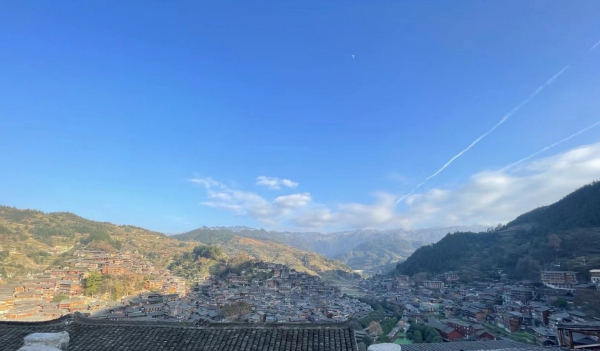
On 21st December, the team came to Danzhai Wanda Town, which is a town based on the traditional characteristic architecture of the Hmongbo and Gam groups. As the saying goes, “Danzhai on the clouds, the great beauty of the non-heritage”. The team could have a great experience of the historical and cultural core of Danzhai’s minority nationality customs. Then, the team learnt about the intangible cultural heritage of “batik making”, exchanged ideas face-to-face with the “representative bearer of the indigo dyeing craft”, and participated in the millennium batik experience, completing the various processes from drawing patterns, dyeing, rinsing and dewaxing, etc., and gradually revealing the patterns to the final appearance of the batik. As the pattern gradually appeared, the beautiful pattern was finally presented, the students and teachers felt a sense of achievement and pride.

Afterwards, the team went to visit Qingyan Ancient Town, a “5A Grade Scenic Spot”. In the ancient Qingyan Ancient Town, there were locals wearing national costumes, and a variety of weird and wonderful vendors, and the team couldn’t help but get into this kind of cozy life. The traditional buildings in the lanes and alleys, and the mysterious folk customs were enchanting.
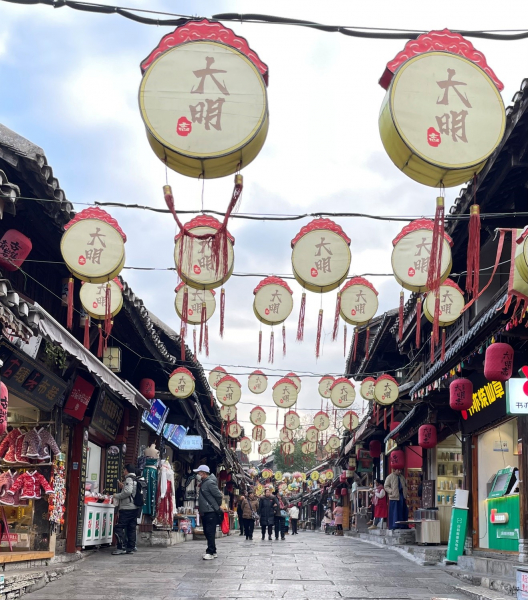
On 22nd December, the team went to visit Xifeng Concentration Camp. Xifeng Concentration Camp was the largest secret prison for communists and patriotic progressives set up by the Kuomintang during the War of Resistance to insist on the reactionary policy of “passive anti-Japanese and active anti-communist”, and was one of the four major concentration camps set up by the Kuomintang during the War of Resistance to the Japanese, along with Bai Gongguan(Chongqing ), Zhazidong Concentration Camp(Chongqing ), and Shangrao Concentration Camp(Jiangxi). During this visit, the team deeply understood the revolutionary martyrs’ indomitable and resolute spirit of resistance and struggle, and they expressed that they would inherit the martyrs’ legacy, carry forward the spirit of the martyrs, and strive for progress in their future study and life.
On 23rd December, the team visited the Red Army’s Four Crossings of Chishui River Memorial Park, which is mainly composed of a memorial tower, a relief wall, a ferry monument and an exhibition gallery. In the Memorial Park, the team learnt about the whole process of cross the Chishui River four times, and realised how difficult it was for the Red Army to achieve the great success of the Four Crossings of Chishui River.
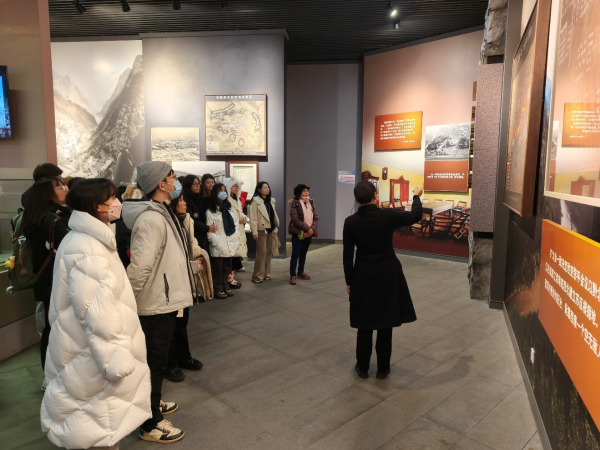
Afterwards, the team arrived at The Pass of Mount Lou, the “Battle of The Pass of Mount Lou” was the key battle of the Zunyi Battle, and the first major victory of the Red Army since the Long March.
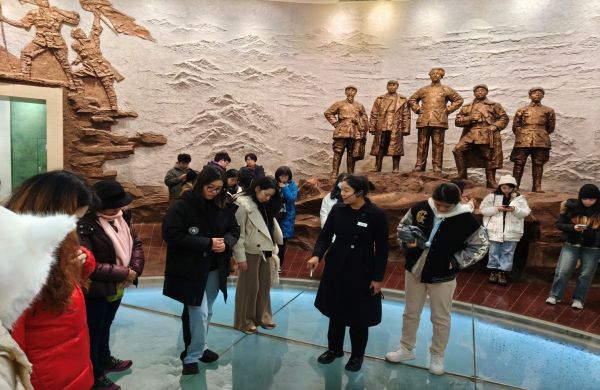
On 25th December, the team visited the Zunyi Conference site. The Zunyi Conference was a life-and-death turning point in the history of the Communist Party of China, which established the new central leadership group represented by Mao Zedong. The exhibition hall, conference room, revolutionary cultural relics, historical information and historical photos in the Zunyi Conference site let the team have a deep understanding of the revolutionary spirit of the revolutionary martyrs who were courageous in struggle, indomitable and not afraid of sacrifice. It also let them learn about the red history of the Zunyi Conference during the long march of 25,000 miles, Cross Chishui River four times with ingenious military move and other red histories in order to carry on the revolutionary traditions of the Zunyi Conference. Also, the revolutionary culture is used to disseminate and nourish the socialist core values. It will also open up broader prospects for the development of socialism with Chinese characteristics.
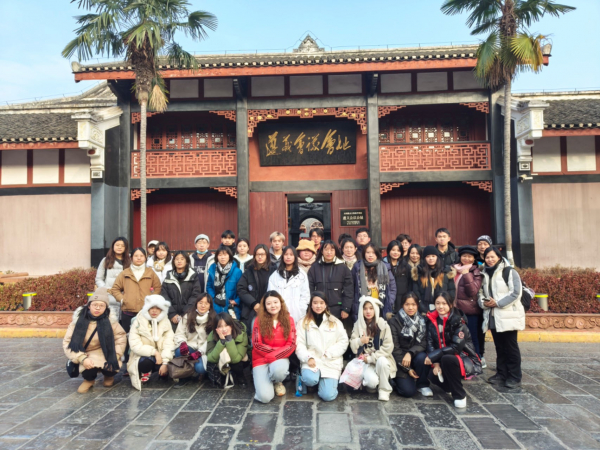
By the “Guizhou – Zunyi Red Culture Study Camp”, the team explored the red history of Guizhou, for having in-depth understanding and experience of the essence of Guizhou culture. This activity is a trip to inherit the revolutionary spirit and continue the red gene, which promotes the knowledge of the students on Chinese history and culture, and the indispensable red revolutionary culture.



